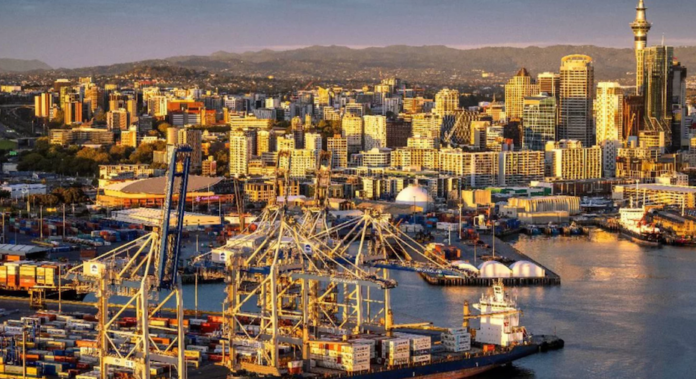Mayor Wayne Brown has given Eke Panuku a “letter of expectation” to undertake master planning for a regenerated publicly-owned waterfront vacated by Ports of Auckland. Eke Panuku Development Auckland chair Paul Majurey says Eke Panuku will support the mayor and council to facilitate the thinking about how Auckland can transform its port lands into great public spaces.
The progressive consolidation of Ports of Auckland’s operations has been occurring over the past 30 years. The next phase could see the finger wharves — Marsden and Captain Cook — and the much larger Bledisloe, currently occupied by imported vehicles, transformed into outstanding public waterfront spaces.
A central focus in our design work will be securing the cultural, recreational, environmental and economic outcomes to best serve Auckland.
All the key elements will need to be there — high amenity, open spaces, seamless interface between land and sea, and a mix of activities, including quality residential, retail and hospitality opportunities to bring people back.
Recent experience also reminds us of the importance of infrastructure capacity, climate change resilience, and the incorporation of diversity and equity.
Regeneration of former port land at the Viaduct and Wynyard resulted in a successful transition from warehouses and maritime commerce to vibrant areas of apartments, business, restaurants and cafes.
The Viaduct’s renaissance was achieved by selling land vacated by Ports of Auckland, and generated a significant value transfer to private purchasers.
The council, on reflection, developed the Wynyard Quarter using long-term leasehold arrangements, which means the ultimate beneficiaries of increases in land value are the people — buildings such as the ASB HQ/Park Hyatt Hotel are on leasehold sites.
This way, the council not only remains the enduring owner of the land but also retains control over the ongoing master planning of Wynyard.
Private land sales can deliver significant returns but it would come with a loss of public ownership and oversight of a strategic public asset.
To assist the mayor and council to make the key decisions, Eke Panuku has been charged in a mayor’s “letter of expectation” to undertake master planning for a regenerated, publicly-owned waterfront.
A key influence in our mahi (work) will be recognising the waterfront and Waitemata are ancestral taonga (treasured possessions) and significant cultural landscapes for Mana Whenua.
For the many tribes with enduring connections in Tamaki Makaurau, the Waitemata and Tikapa Moana (Hauraki Gulf) are a central part of their identity.
Water connects, whereas land can divide
The presence of the tribes in and around Tamaki Makaurau was via the moana (water), and it was the water that influenced relationships with the whenua (land) and the exercise of customary interests.
There are well-established processes for this work at Eke Panuku through the Rangatira Forum. The recent expansion at Westhaven involved the various iwi of Auckland in extensive workshops to create a concept design that celebrated Mana Whenua connections to the harbour.
A rejuvenated waterfront can also incorporate the best of international models. This was successfully undertaken for the award-winning Te Ara Tukutuku project — a partnership of Eke Panuku and Mana Whenua to re-imagine Wynyard Point.
We envisage a pursuit of quality that is broad in its remit, and flexible and co-operative in its operation.
Thinking of the great urban waterfront examples in Vancouver, Stockholm, Copenhagen and Singapore, they all have vibrant harbours which connect to their city centres, and sustain a range of activities that place access for people at the heart of it.
Closer to home, Sydney is an example of what can be achieved as a port transitions away from the central city, freeing up the waterfront to be repurposed for the city.
We need to create destinations that are interconnected, from the waterfront back to the city centre, the vibrancy of the downtown area and Britomart, across to the Viaduct/Wynyard Quarter and beyond. The fewer impediments to people walking and cycling, the better.
Harbour swimming around the port area may have seemed a distant prospect, but anyone who has visited Copenhagen’s People’s Park — where crowds sit in the sun on the pontoons in between swims — will know what replicating that sort of experience could do for helping to transform our waterfront.
Over the coming year, Eke Panuku will support the mayor and council group to bring together the thinking for how Auckland can proceed to transform its port lands into great public spaces.
For years, people have talked about this Waitemata connection being Auckland’s jewel. This is the opportunity for Tamaki Makaurau to finally begin the realisation of that aspiration.
• This article first appeared in The New Zealand Herald.




